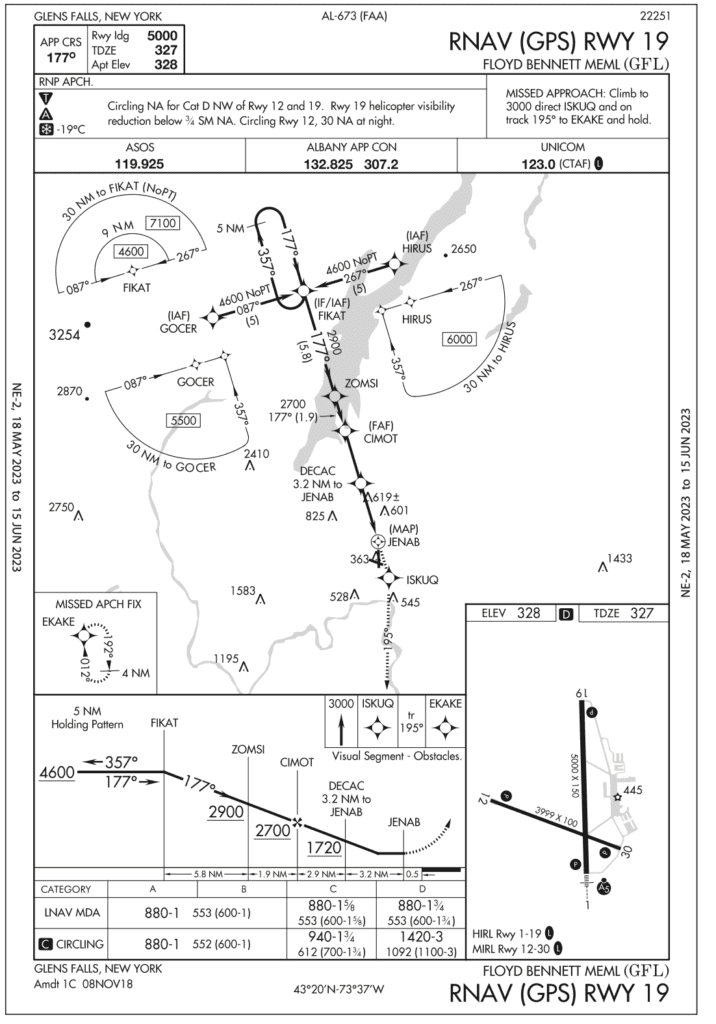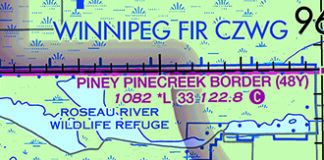GNS Can Hold
I’ve certainly enjoyed your magazine for some time now, but with the March article, “Random Holds” by Mark Kolber, I was a little surprised he did not mention the use of the OBS function on the GNS 4xx and 5xx Garmin navigators with regards to creating a random hold.
I’m sure many of us haven’t yet upgraded to the newer devices. And using OBS mode is simple though not well taught and depicts course guidance on an approved device.
Sam Ferguson
[Location withheld]
Well, while simply flying a hold wasn’t the thrust of the article, we did mention exactly what you’re referencing. On the second page of the article (magazine page 13), in the center of the page right under the “Using an EFB” subheading, it says, “There are many GNS 430s and 530s still in our fleets. The best we can do is use OBS mode to create the inbound leg.”
But again, the main focus of the article was to program an ad-hoc hold that’s not in the database. Unfortunately, that’s not something the substantial number of GNS navigators that remain in service can do.
Standard Phraseology
As a former controller and as a GA and an airline pilot, I am most appreciative of Tarrance Kramer and his articles on communication, whether IFR or VFR. (“Towerless Tribulations,” April 2023)
It is refreshing to me to read of a professional such as Tarrance and how we as pilots need to have the same level of professionalism in our communications (i.e. using proper phraseology) to controllers that they display to us, even when we sometimes frustrate them. We always want them to help us and we can ensure that goes smoothly by helping them with the correct verbiage.
Keep up the great articles and I appreciate your time and articles, Tarrance, very much. And I will talk to you at work (ABEX) when passing overhead!
David Morton
[Location Withheld]
Give ’Em a Ride
Reference the Readback letter in May, “Give ’Em a Ride.” Many years ago I was prepping our King Air for a three-hour flight. I called for my clearance before engine start. I got the clearance and was about to turn off my handheld when the controller asked if we had room for an additional passenger. I told her that we did.
She explained she had a sister who lived near our destination and she wanted to visit. Within 15 minutes she was on board. She got a release from her supervisor and her sister would furnish any necessary items. I had her sit in the right seat where she could observe everything. I explained there were no egos in the cockpit and that if she saw any issues she should speak up.
She was reluctant to make any radio calls as she wasn’t sure if she was allowed. She settled on critiquing my transmissions and was very helpful. She did find out that above FL240 radio transmissions drop off and it can actually get boring.
After landing she was very thankful and said she couldn’t wait to tell the crew in the tower her experience. I didn’t find out how she returned, but I know she told of her adventure because all my future dealings with those tower personnel were even more helpful than usual.
Guy Mellick
McGregor, Texas
Descent on Cruise?
In the March quiz, “En-Route IFR” you described the cruise clearance as the ability to climb, descend or level off at any altitude in the block of airspace down to MEA without reporting to ATC. Yet once you report you are leaving an altitude for a lower one, you cannot climb again without an additional ATC clearance. Isn’t this contradictory?
Larry Levin
Lincoln, Rhode Island
Nope, not contradictory. The difference is the report. You can climb or descend on a cruise clearance, but once you report leaving (relinquish) an altitude, you can’t climb back to it. Refer to AIM 4-4-3.d.3.:
“The term ‘cruise’ may be used instead of ‘maintain’ to assign a block of airspace to a pilot from the minimum IFR altitude up to and including the altitude specified in the cruise clearance. The pilot may level off at any intermediate altitude within this block of airspace. Climb/descent within the block is to be made at the discretion of the pilot. However, once the pilot starts descent and verbally reports leaving an altitude in the block, the pilot may not return to that altitude without additional ATC clearance.”
It’s a fine point and easily confused.
Also, to be thorough, note that the AIM says our low-altitude restriction is the minimum IFR altitude, which is our responsibility to determine. We generally interpret this to mean MEA since that’s easy to find, but the actual minimum IFR altitude can be lower than the MEA.
Confusing NOTAM
Would you give your opinion on a discussion we have been having concerning the RNAV19 approach to KGFL? It has a NOTAM that states “Straight in runway 19 NA at night.” That does not seem to preclude circling to Runway 1 or even to Runway 19.
One person has a thought that if you descend to circling mins, you can still go straight in. In this case, however, circling min for both Cat A and B aircraft is 880.
I feel that if there is a NOTAM for no straight-in approaches at night that there must be something after DECAC that is a possible obstruction per TERPS and that if you must land on 19, it would be okay to descend to circling mins, then fly upwind, crosswind, and downwind before descending below circling mins. Clearly it is okay to circle to Runway 1.
What are your thoughts on this?
Larry Levin
Lincoln, Rhode Island
Yes, the NOTAM language is confusing. The FAA knows it and has been exploring changing to clearer language, but it takes the FAA a long time to make any changes.
A NOTAM that says, “Straight in Runway 19 NA at night,” should be interpreted strictly. It’s referring to the minimums, so at night you cannot legally descend to the straight-in minimums for that runway. You can, however, descend to circling mins and then do anything permitted from there, including continue your descent (in accordance with the descent-below-minimums requirements of §91.175) for what amounts to a straight-in landing from higher minimums.

However, this approach has an interesting twist that you noted. The straight-in minimums and the circling minimums for Categories A and B are the same. Yes, this NOTAM suggests that there’s some unlit obstacle that penetrates the obstacle evaluation area (OEA) for a straight-in approach that is outside the OEA for the circling approach. The mins being the same further suggests that any landing on Runway 19 might encounter that OEA penetration.
So, while any landing on Runway 19 from circling minimums is permitted, it could be a bit risky. Looking at all this, it might be best to use a different runway unless the winds prevented doing so. In that case, seriously evaluate the need to land at Glens Falls in the first place. If the need to land is compelling (really?), be on full alert, looking for the reason for the NOTAM. Plus, aim the landing a bit down the runway to remain higher than normal. With 5000 feet of runway, any Class B aircraft should have no problem with a high approach and a touchdown past the 1000-foot marks.





